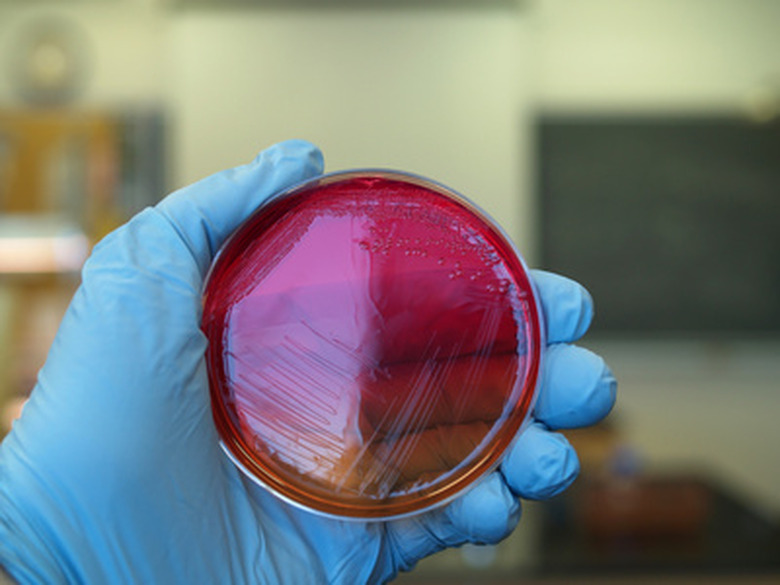How To Store Agar Plates
Agar is a gelatinous material used as a medium for growing bacteria cultures. Agar plates refer to this gelatinous material in addition to other nutrients. (Examples of nutrient agars, according to University of Missouri-St. Louis, include nutrient agar, starch agar, milk agar, egg yolk agar.) Additional nutrients can be added to provide optimal growth conditions for certain bacteria. Agar plates must be kept free of bacteria during storage.
Step 1
Store agar plates upside down. Stack the plates in their original bags for further protection from contamination.
Step 2
Store agar plates in a refrigerator. Most bacteria cannot grow well in cold temperatures.
Step 3
Store plates in a cold room if a refrigerator is not available. If you are storing plates in a cold room, check the plates for condensation a few hours after pouring. Condensation results from exposure to a heat source that drives water out of the water and into the lid of the plate. This will dry the agar out and render it unusable. Turn the plates over if condensation is visible and monitor closely for more condensation development.
TL;DR (Too Long; Didn't Read)
Before using the plates, examine them carefully for microbial growth (tiny colonies of microbes) that may have grown during storage. Check for cracking of the agar medium, which indicates that the plates are drying out. If the plates are not dried out and have not been contaminated, the plates can be used.
Warning
Do not store agar plates that contain antibiotics in the medium for more than three or more weeks (ampicillin, for example, should not be used after a month of refrigerated storage; the medium will be bad after a shorter period of time if stored at room temperature).
Cite This Article
MLA
Fiechter, Kyle. "How To Store Agar Plates" sciencing.com, https://www.sciencing.com/store-agar-plates-7149327/. 24 April 2017.
APA
Fiechter, Kyle. (2017, April 24). How To Store Agar Plates. sciencing.com. Retrieved from https://www.sciencing.com/store-agar-plates-7149327/
Chicago
Fiechter, Kyle. How To Store Agar Plates last modified March 24, 2022. https://www.sciencing.com/store-agar-plates-7149327/
